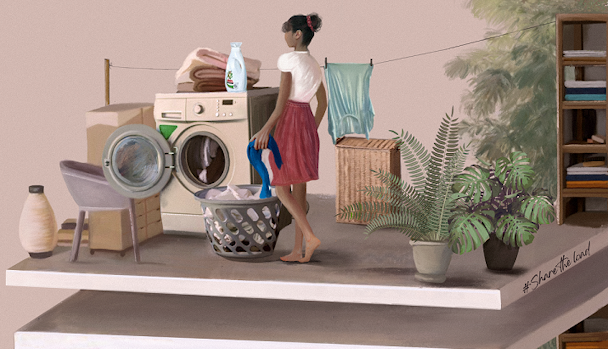P&G India CMO Sharat Verma on taking Ariel’s ‘Share the load’ beyond an ad campaign
P&G’s ‘Share the Load’ campaign for Ariel is now in its fifth iteration, making it one of the longest-running Indian campaigns of recent times. The Drum catches up with chief marketing officer Sharat Verma to hear more about the brand’s plans to lead the conversation around improving gender portrayal.

How is Ariel’s ‘share the load’ going beyond an ad?
Ariel’s ‘Share the Load,’ launched in 2015 and currently in its fifth edition, has been trying to create conversations that go beyond talking about just the core functional benefit of the laundry brand. Rather, it has been advocating for gender equality in the division of domestic tasks with the various layers of its award-winning #ShareTheLoad movement.
Most recently, it put out an open letter to advertisers, media partners and content creators asking stakeholders to join it in being more deliberate in showing progressive, authentic and equal imagery that can help tackle stereotypes.
This comes on the back of the latest edition of #SeeEqual, which has put the spotlight on unconscious bias by raising a pertinent question: “If men can share the load equally with other men, why not with their wives?
The Drum quizzes Sharat Verma, chief marketing officer and vice-president of fabric care at P&G India, about the various layers of the campaign and how the brand plans to walk the talk.
How is the long-running campaign being taken to the next level in its current edition? What are the various facets?
Positive imagery has a big role to play in accelerating the pace of change, and we have already started to partner with different kinds of organizations to address imagery via the recently-launched open letter.
Ariel’s foray into the non-fungible token (NFT) space is an attempt to promote more authentic, accurate and equal representation in pop-culture imagery, where NFT artists have developed digital artwork based on their interpretation of the core message of #SeeEqual.
The brand has also partnered with OTT platform Disney+ Hotstar, and curated a collection of movies and TV shows under special watchlists called #SeeEqual and #ShareTheLoad. They are curated lists of content that one can watch with the family as they have progressive imagery, strong narratives and an authentic portrayal of women.
Taking the conversation to the consumers of tomorrow, the brand has partnered with MICA, a leading Indian marketing and advertising educational institute based in Ahmedabad, to conduct guest lectures and engage with the students. The idea of all the initiatives is to incentivize future generations of marketers and advertisers to #SeeEqual when creating advertising and marketing content, to pave the way for more accurate and progressive representation going forward.
How did the plan to launch the open letter come about?
Over the years, we have identified conversations and imagery as two key tools to bring about faster change. Conversations have the power to drive realization, and therefore over the years we have continued to join, ignite, amplify, curate and direct conversations that can help bring about social and cultural change people want to see.
While this is important, imagery and representation can also have a substantial impact on the pace of change to help unwind bias and tackle stereotypes.
Thus, the impetus around the need to swap the imagery for that which is gender-neutral, positive, progressive and authentic can help shatter these stereotypes and make us introspective.
This open letter is intended to spark a conversation and invite like-minded organizations to come together so that we can all work in partnership to create a more equal world.
How is Ariel planning to walk the talk to take the campaign beyond an ad film?
This letter is an appeal to all content creators to be more deliberate in the depiction of women – the roles, characters and context in which they are portrayed.
The more we show progressive imagery, the more people start accepting and believing in the possibility of those narratives in real life – it does not seem far-fetched any more. And as we start accepting it, we can also consciously start working toward making it a reality.
What we need now, in light of the brewing radical impatience (a term used by UN Women) in women around the country as well as globally, is to accelerate the pace at which we are moving toward equality.
The open letter is our next step – we are putting out an open invitation to partner with anyone and everyone who believes in the power of representation, and who is willing to join hands to break the cycle of stereotypical portrayals.
We are already in conversation with organizations that have reached out after we sent the open letter, so we are hopeful of the change this can bring.
What is the role that marketing and advertising can play in evolving gender portrayal?
Reality and stories end up being reflections of each other. The letter talks about the vicious cycle between imagery and society, which we know will continue to imitate each other unless a concerted effort is put in to break it. It urges us all to be more deliberate in showing progressive, authentic and equal imagery that can unwind decades of conditioning and stereotypes.
Specifically, on the cause of equality within households, the letter highlights that if narratives continue to depict only women doing household chores, it will hold back progress and perpetuate stereotypes.
Content, whether advertising or otherwise, can potentially challenge these stereotypes and help us introspect our own biases, thereby bringing about the change.

